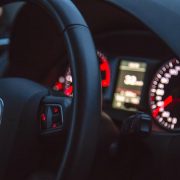Learner Driver Tips
When you’re learning to drive, there’s a lot to remember. Here’s some tips to help you learn to drive safely.
Before you start any driving sessions, you need to:
- Revise the road rules
- Apply your L plates to your car
- Put your learner logbook in a safe place like your glove box
- Choose a place to keep your learner licence, as you need to have it with you every time you drive
Locate a Supervisor
- Your supervisor can be whomever you choose, as long as they have held an open licence for at least one year for the appropriate class of vehicle you’re driving
- Combining regular practice sessions with your parents or friends, and professional driving lessons is a good idea
Practicing
- You need to keep your learner’s licence for at least a year – this will present you with various situations to learn from
- You should get plenty of practice throughout your learner licence period, instead of rushing to catch up just before your practical test
- Try practicing in different locations every week to improve your skills
- Drive in assorted situations, like wet weather, during peak times, at dusk and at night-time
Be sure to be alert and focused when driving with a supervisor.
Don’t drive when you:
- Are tired
- Have consumed alcohol – learners cannot have any alcohol in their system
- Have had medication – prescription or illegal drugs
How to Drive Safely
Preparing Your Car
Before you begin your first drive:
- Check that there is at least 1.5mm tread on your tyres, and that they are inflated properly
- Have enough fuel, and check the oil and water levels
- Correctly adjust the seat
- Make sure the headrest is at least level with your eyes
- Set the steering wheel height so you can see the instrument panels, the road, and are comfortable
- Be sure the pedals are well within reach
- Get your supervisor to check where your blind spots are
- Your supervisor can also check if the lights are all working
- Establish where the essential controls are, like the handbrake, demister, windscreen wipers, indicators and horn. Check their functionality
Different cars have different handling, so if you’re learning to drive in various cars, make sure you get familiar with their characteristics, like power steering, different braking response, different mirrors.
During your first drives:
Don’t have the radio on, it can be a distraction
Consider other drivers and how your driving might affect them
Night Driving
Use your headlights between dusk and dawn or when there is low visibility. You need to be able to see your surroundings and be seen.
If a vehicle using its high beams approaches you, slow down and keep your eyes to the left until it has passed
Adverse Conditions
When driving during smoky, foggy, or rainy conditions:
- Reduce speed
- Increase the distance between you and the vehicle before you
- Avoid braking, turning, or accelerating suddenly, to reduce risk of losing traction
- Use your headlights
- Utilise your demister or air conditioning to prevent the windows fogging up
- Don’t ignore road closed signs
- Never drive on a water-covered road
Country Driving
Watch for animals on the road, roadsides and at water crossings, especially at night and sunrise
Be careful of machinery being towed by tractors
Don’t stop on or around bridges, causeways, or narrow areas
Look out for heavy or long vehicles on narrow roads
When safe, manoeuvre to the left and off the road when a long vehicle or road train is approaching – this protects your windscreen from debris
Don’t overtake a long vehicle on a bridge, curve or crest – you should wait til you have a clear view on straight, flat ground.
These are just a few tips for a safe and productive learner driving experience. Check out Queensland Transport’s website for more information.









